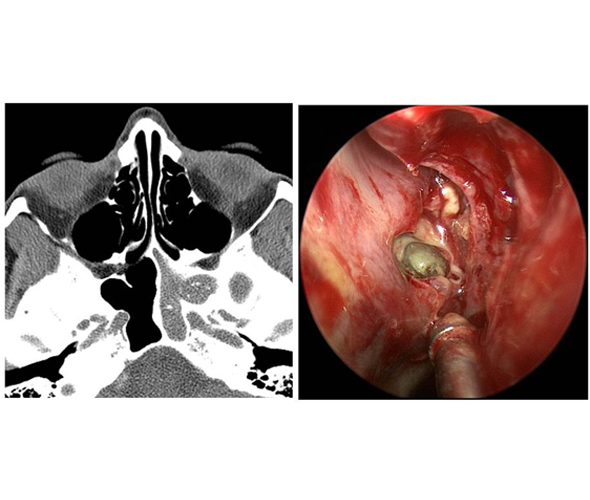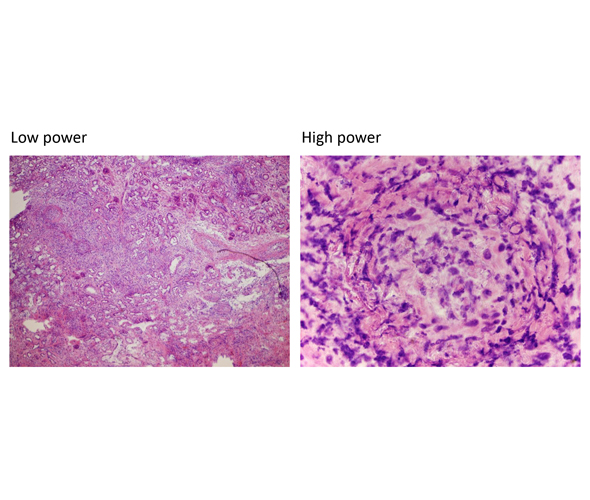1.
Briefly discuss the different types of fungal sinusitis.
2.
What organisms are responsible for non-invasive and invasive fungal sinusitis?
3.
Discuss the histologic differences between Mucor and Aspergillus infections.
4.
Discuss the Bent and Kuhn criteria for allergic fungal sinusitis (AFS).
5.
How does granulomatous invasive fungal rhinosinusitis differ from other invasive sinusitis?
6.
Describe radiographic findings on CT and MRI of AFS.
7.
What is a mycetoma? What term has replaced mycetoma? What is the typical radiologic findings and how is it treated?
8.
Review the CT and intra-operative endoscopic picture provided. What is the most likely diagnosis?
9.
How do you differentiate between chronic invasive vs. acute invasive?
10.
How is allergic fungal sinusitis treated? Is medical management effective? What is the role of antifungal therapy in chronic rhinosinusitis?
Reference(s):
Sacks, P.-L. 4th, Harvey, R. J., Rimmer, J., Gallagher, R. M., & Sacks, R. (2012). Antifungal therapy in the treatment of chronic rhinosinusitis: a meta-analysis. American Journal of Rhinology & Allergy, 26(2), 141–147.
11.
Is there a role for immunotherapy in treating allergic fungal sinusitis?
12.
Review the low and high power histopathology images of sinonasal tissue provided here. What is the most likely diagnosis?
13.
Discuss risk factors, clinical presentation and management of acute invasive fungal sinusitis? Which patients have a better prognosis?
14.
Is AFS distinct from Eosinophilic Mucin Rhinosinusitis (EMRS)?
Reference(s):
Uri, N., Ronen, O., Marshak, T., Parpara, O., Nashashibi, M., & Gruber, M. (2013). Allergic fungal sinusitis and eosinophilic mucin rhinosinusitis: diagnostic criteria. The Journal of Laryngology and Otology, 127(9), 867–871.
15.
You are called to the ICU to evaluate a neutropenic patient for invasive fungal sinusitis. Review a systematic approach to the diagnosis and management of this problem.
16.
Should frozen sections be routinely employed for early diagnosis of invasive fungal sinusitis?
Reference(s):
Papagiannopoulos, P., Lin, D. M., Al-Khudari, S., Rajan, K., Reddy, S., Gattuso, P., … Batra, P. S. (2017). Utility of intraoperative frozen sections in surgical decision making for acute invasive fungal rhinosinusitis. International Forum of Allergy & Rhinology, 7(5), 502–507.
17.
Is allergic fungal rhinosinusitis caused by allergies or infection? Are there genetic predispositions to AFS?
Reference(s):
Marple, B. F. (2001). Allergic fungal rhinosinusitis: current theories and management strategies. The Laryngoscope, 111(6), 1006–1019.



